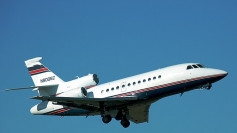A drone attack at a US military outpost in Jordan, known as Tower 22, has resulted in the tragic loss of three American soldiers, with dozens more injured. The attack, which occurred on Sunday, unfolded under circumstances that have prompted a thorough investigation, as the hostile drone entered the airspace almost simultaneously with an American drone returning to the base, leading to a critical delay in the US forces' response due to the initial confusion over the drone's identity.
Two US officials, speaking to CNN under the condition of anonymity, elucidated the sequence of events leading to the deadly attack. One official revealed, "The enemy drone followed the American drone as it approached, but it is not clear whether the enemy drone intentionally followed the American one or if it was a coincidence." This ambiguity significantly hampered the ability of the US forces to immediately identify the threat and take defensive action.
The Wall Street Journal was the first to report on the confusion that surrounded the enemy drone's approach, highlighting the complexities and challenges of modern aerial warfare where distinguishing between friend and foe can be fraught with peril. The officials are still piecing together the enemy drone's origin, with the broader implications of the attack stirring concerns of escalating hostilities in a region already brimming with tension.
The casualties inflicted by this drone strike are not just numbers; they represent a profound loss to the US military community and the nation. Beyond the three soldiers killed, more than 30 were wounded in the attack, with eight of them transferred to Landstuhl Regional Medical Center in Germany for advanced medical care. A US official reassured, "All eight are in stable condition," but the toll of the attack extends to those who may suffer from traumatic brain injury (TBI) symptoms, which can manifest over time, potentially increasing the number of those affected.
This incident marks a significant escalation in the ongoing confrontations that have seen roughly 165 attacks on US and coalition forces since October 17. The frequency and intensity of these attacks underscore the volatile security situation in the Middle East, where the US and its allies are navigating a minefield of rising tensions on multiple fronts, including continuous assaults by Iran-backed militia groups in Iraq and Syria, confrontations with the Iran-backed Houthis in Yemen, and the ongoing military campaigns by Israel in Gaza and against Hezbollah in Lebanon.
The prevailing consensus among US officials suggests that an Iran-backed militia group orchestrated the deadly drone strike, with National Security Council spokesman John Kirby indicating to CNN's Phil Mattingly that "the group was supported by Kataib Hezbollah, which is one of the main IRGC Revolutionary Guard-core backed groups in Iraq and Syria." Kirby's statement highlights the intricate network of proxy groups that Iran employs to project its power and influence across the region, often at the expense of regional stability and security.
In the aftermath of the attack, US officials, including Defense Secretary Lloyd Austin, have vowed to take decisive measures to protect US forces and prevent similar incidents in the future. Upon his return to the Pentagon after a medical absence, Austin articulated his emotions, stating, "Let me start with my outrage and sorrow for the death of three brave US troops in Jordan, and for the other troops who were wounded. The President and I will not tolerate attacks on US forces, and we will take all necessary actions to defend the US and our troops."
The incident has also elicited reactions from Congress, with some lawmakers advocating for a more forceful response to deter Iran and its proxies from further aggression. Senator Roger Wicker, the ranking Republican on the Senate Armed Services Committee, called for direct action "against Iranian targets and its leadership," emphasizing the need for a robust retaliation to such provocations.
As the US military and intelligence agencies continue to investigate the attack and formulate an appropriate response, the drone strike at Tower 22 serves as a grim reminder of the persistent threats faced by American service members stationed abroad. It also highlights the broader geopolitical chess game being played in the Middle East, where the actions of state and non-state actors alike have far-reaching consequences for regional and global security.






